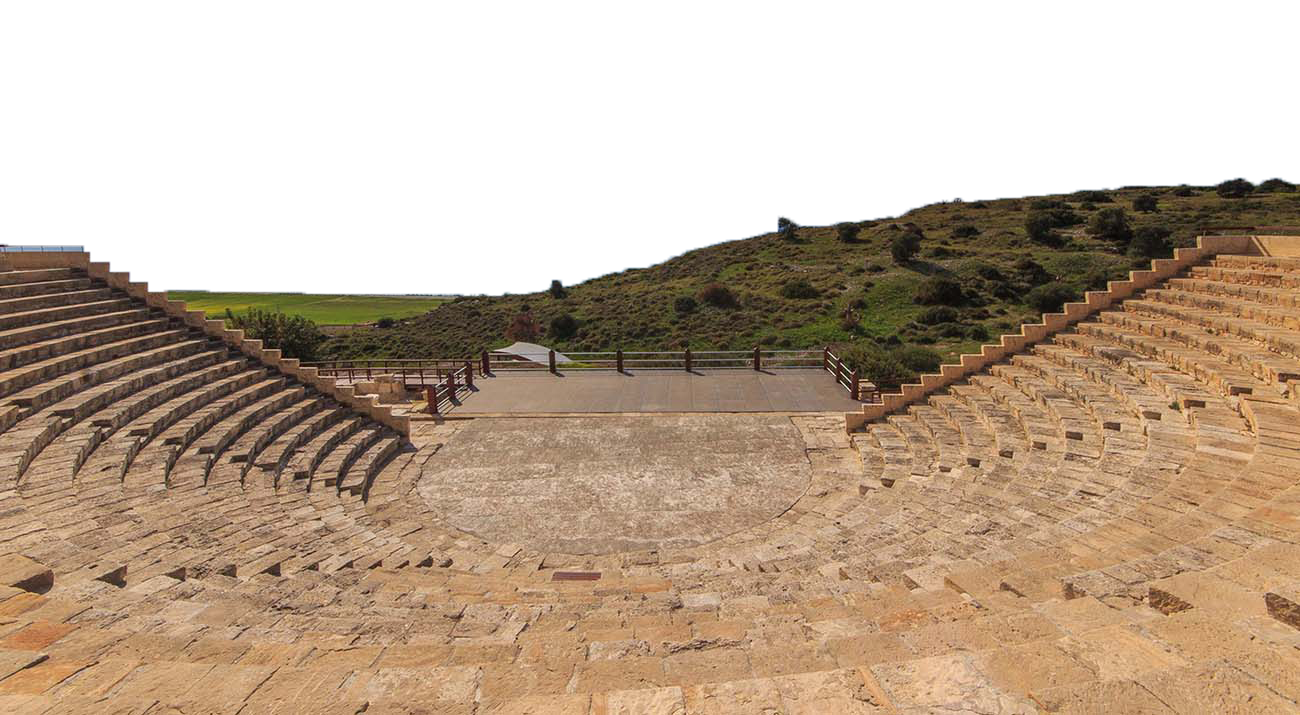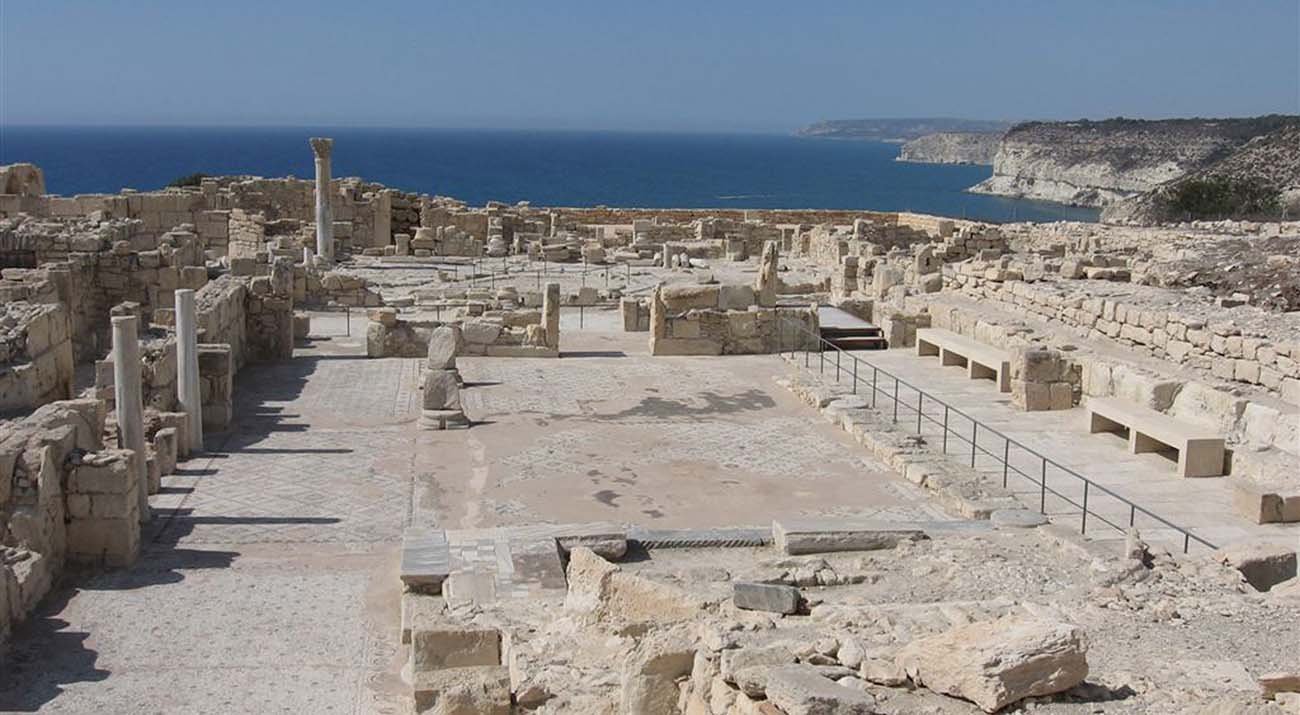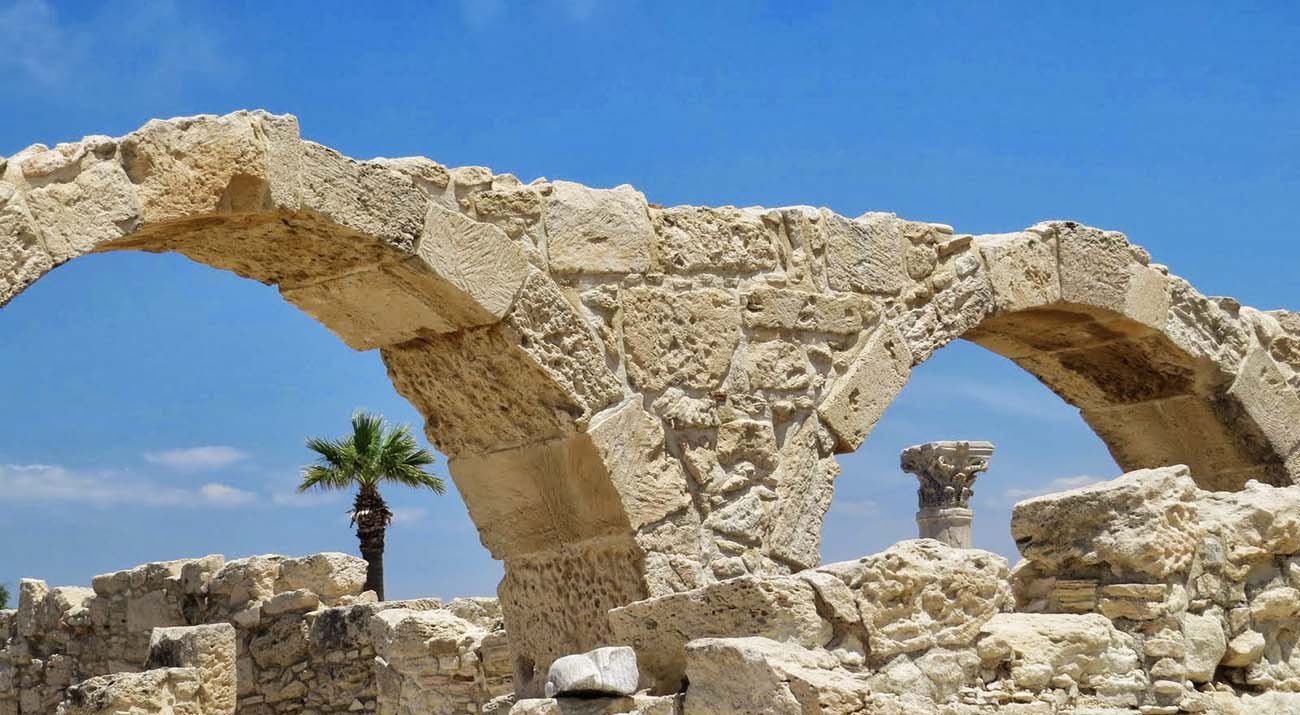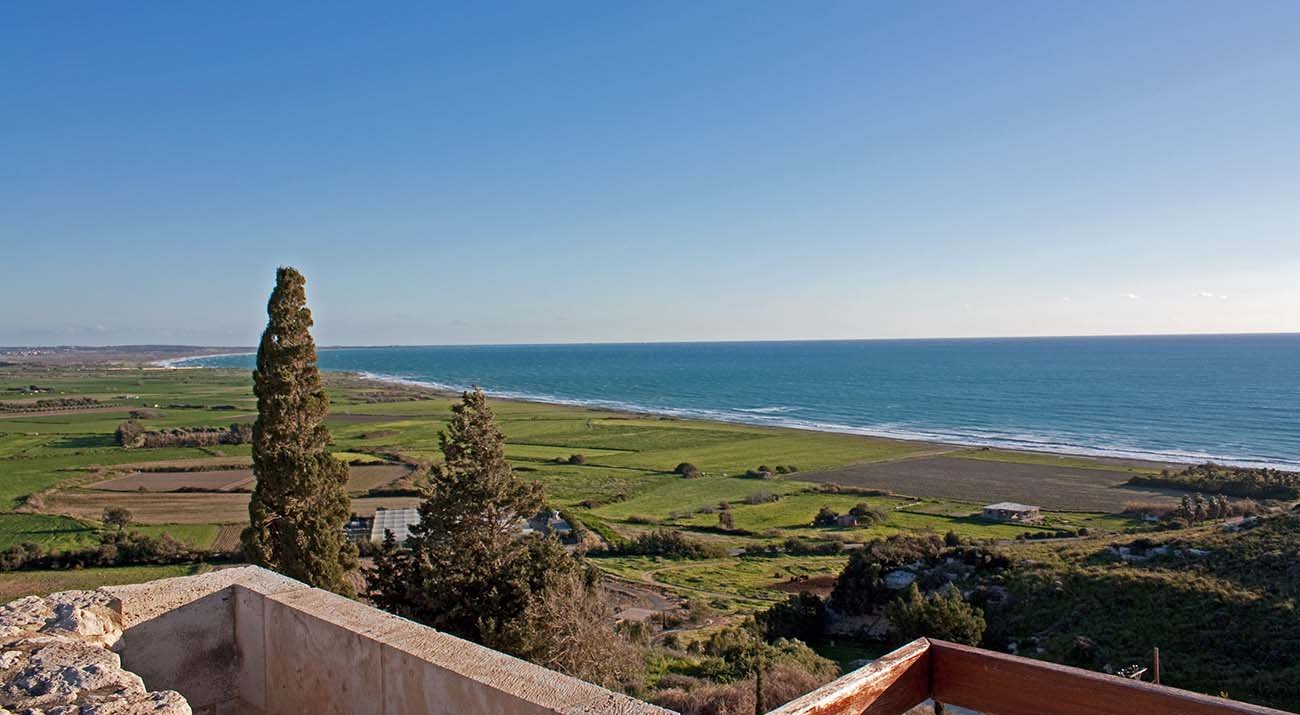
The ancient city-state of Kourion lies in the British Overseas Territory of Akrotiri and Dhekelia but is maintained and administrated by the Republic of Cyprus according to the Treaty of Establishment. The mount of Kourion, on which the ancient city-kingdom developed, occupies a dominant position on the coast 4 km southwest of the village of Episkopi in Limassol district. The earliest evidence of settlement in the broader area of Kourion dates to the Neolithic period (4500-3900 B.C.), whilst the most ancient remains in the area of the ancient city itself are connected with settlements and tombs of the Middle and Late Bronze Age. According to tradition Kourion was founded by Argives in the 13th century BC, during the first wave of the Mycenaean expansion and others followed the Argives in the 12th century as a result of the Dorian invasion of Greece. This site is on 4VIP Tour agenda.
Systematic excavations were undertaken in 1933-54 by the Pennsylvania University Museum with a break during the war years. During the excavations, the building of the Achilles Mosaic, the Theatre, the Baths and the Complex of Eustolios, the Stadium and the Sanctuary of Apollon Hylates came to light. In 1974-1979 the American Mission of the Dumbarton Oaks Centre for Byzantine Studies carried out excavations in the Early Christian Basilica of Kourion. At the same time (from 1964 until today) the Department of Antiquities of Cyprus excavated the Agora, the House of Gladiators, the Small Basilica next to the Stadium and the newly discovered Coastal Basilica. The Department is also responsible for the creation of the archaeological park of Kourion.
The city has a very large market place and you can find an early Christian Basilica as well within the city walls. Furthermore, large public baths which were equipped with cold, warm and hot spas were built. The large amphitheater sits 2000 spectators and held mostly gladiator games in the city; there is also a Palestra or a training place for gladiators. It’s one of the best sightseeing tours in Cyprus and must be on your Cyprus Holiday agenda.
The remains of Kourion, near the modern town of Episkopi, are located on one of the most fertile spots in the island, with extensive ruins and well-preserved mosaics. First settled in by the Mycenaeans, the city peaked in Roman times, as evidenced by remnants of the empire such as its great stadium, theatre and lavish public baths. As in many of Cyprus’s great ancient cities, the cults of Aphrodite and Apollo thrived here, and both of these Hellenistic deities have shrines here. Wandering through Kourion’s ruins, it is not hard to imagine the city as it must once have been: a jewel of Rome’s eastern possessions, until its destruction by an earthquake in 365 AD. A wonderful Historical site to visit in an excursion in Cyprus.
The most spectacular site at Kourion is the Greco-Roman theatre, or forum, that has been completely restored (with the Mediterranean as a backdrop) and is used today for open air musical and theatrical performances. It is one of the venues for the International Festival of Ancient Greek Drama. This ranks high amongst tourist attractions in Cyprus.
Some of the important monuments at the site are:
The Agora: The Roman Agora(market place) in its present state is a structure of the early 3rd century A.D. with additions dating to the Early Christian period. It was built on the remains of an earlier public building, which was in use from the end of the 4th century to the end of the Hellenistic period. The Agora is surrounded on both sides by porticos with marble columns. An impressive public bath and a Nymphaeum, which supplied the city with water, occupy the northwest side of the Agora.
The House of Achilles: Only part of the building, which is situated at the northwestern end of Kourion near the old Limassol-Paphos road, is preserved today. It is a Roman villa of the first half of the 4th century A.D. with a central peristyle court. Several rooms are decorated with mosaic floors. The most interesting floor depicts the popular story of the revealing of Achilles' true identity by Odysseus in the court of King Lycomedes at Skyros. The excavators suggest that this was a civic reception centre for distinguished visitors we called VIP this days.
The House of the Gladiators: This Roman house, which dates to the second half of the 3rd century A.D., is situated a few meters to the east of the House of Achilles. It has a central courtyard with corridors on all four sides and rooms opening onto them. Among the mosaics, which decorate the east and south wings of the courtyard, the most important are those in the east wing depicting a Gladiator combat scene which is rare in Cyprus.
The Theatre: It was originally built in the 2nd century B.C. but what is preserved today dates to the Roman period with 2nd and 3rd century A.D. additions and restorations. In the curved auditorium the spectators’ seating area accommodates around 2000 people. The stage only preserves its foundations but it originally rose to the full height of the auditorium. Today the theatre is used for cultural events.
The Early Christian Basilica: South of the Agora are the remains of the large complex of buildings belonging to the three-aisled basilica, the cathedral of Kourion. Originally built in the beginning of the 5th century A.D., it underwent architectural alterations and received new mosaic and opus sectile pavements in the 6th century. In the west, the basilica communicated with a narthex and a succession of buildings including the diakonikon, where the faithful deposited their offerings, and the house of the bishop of Kourion. To the north, the basilica extended to the atrium and the baptistery, which had the form of a small three-aisled basilica with a narthex. After the destruction of the basilica in the 7th century many pieces belonging to its mural marble sculpture were transferred and incorporated in the pavement of the newly-erected church of the neighboring village of Episkopi.
The Sanctuary of Apollo Hylates: The sanctuary is located about 2.5 kilometers west of the ancient town of Kourion along the road which leads to Paphos. It was one of the main religious centers of ancient Cyprus, where Apollo was worshipped as God of the woodlands. It seems that the worship of Apollo on this site began as early as the 8th century B.C. and continued until the 4th century A.D. The site has undergone many extensions and alterations in different periods. The majority of the monuments as they can be seen today belong to the site's 1st century AD restorations. In that century, the temple was rebuilt with a different architectural style. A small building south of the Precinct may have been a priest’s house. Along the external east side of the walls are the Palaestra and the Baths.
The Stadium: The ruins of the ancient stadium are preserved to the east of the sanctuary of Apollo. The stadium has a U-shaped plan and has seven rows of seats which would have accommodated around 6000 spectators. It was built in the 2nd century A.D. and was used until the end of the 5th century. Kourion Park is the one of the Tour that you could not miss while visiting Cyprus.
Private car with driver for 3 hours
120 euro
Additional hour
25 euro
Cost based on 2-4 Person
Private minibus with driver for 3 hours
220 euro
Additional hour
35 euro
Cost based on 5-8 Person





